www.karendias.studio

Artist Bio
Karen Dias (b. 1987) is an interdisciplinary artist from Mumbai with roots in Goa, India. Her recent practice spans across lens-based media, sculpture and installation. Karen’s work has been exhibited at Tissuers d’Images Festival (France), Gulf Photo Plus (UAE), Serendipity Arts Festival (India) and Chennai Photo Biennale (India). She is a teaching instructor at the Philadelphia Photo Arts Center and International Center of Photography. Karen lives in New York City.
Email: karend13@gmail.com Instagram: @diastopia
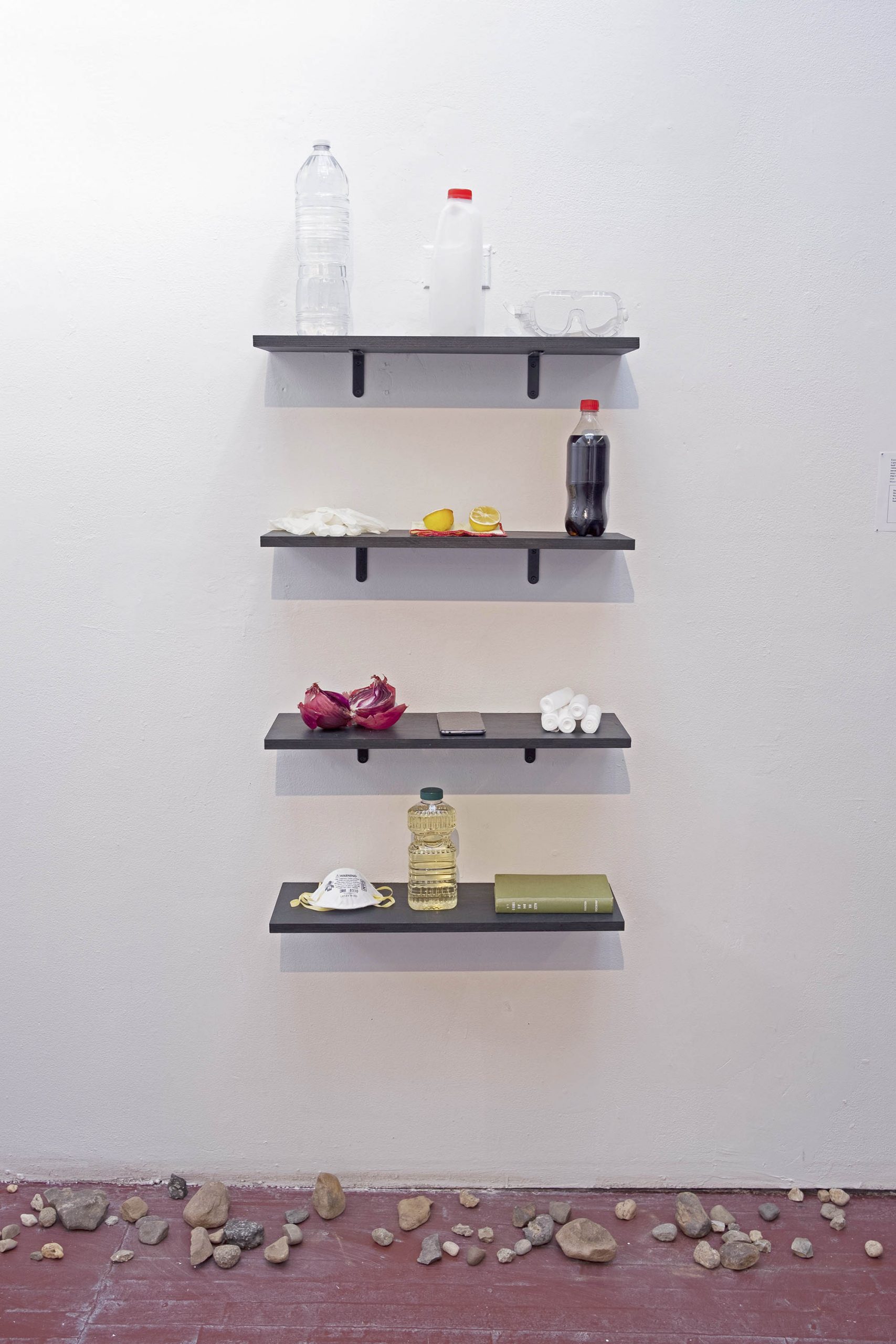
A proactive society finds ways to protect itself in the face of state-sponsored violence in times of state-manufactured unrest at a location as near or as far away from you as you can imagine. But what if it didn’t need to, 2020
Mixed-media installation
Wooden shelves, metal shelf brackets, bottle of water, bottle of milk, bottle of Coca Cola, bottle of cooking vegetable oil, red onion, lemon, medical mask, rubber gloves, smart phone, medical gauze, stones, book: "Anarchism and Other Essays" by Emma Goldman
Dimensions variable

Searching For, 2021
UV-printed rice paper, steel frame
10 x 4'
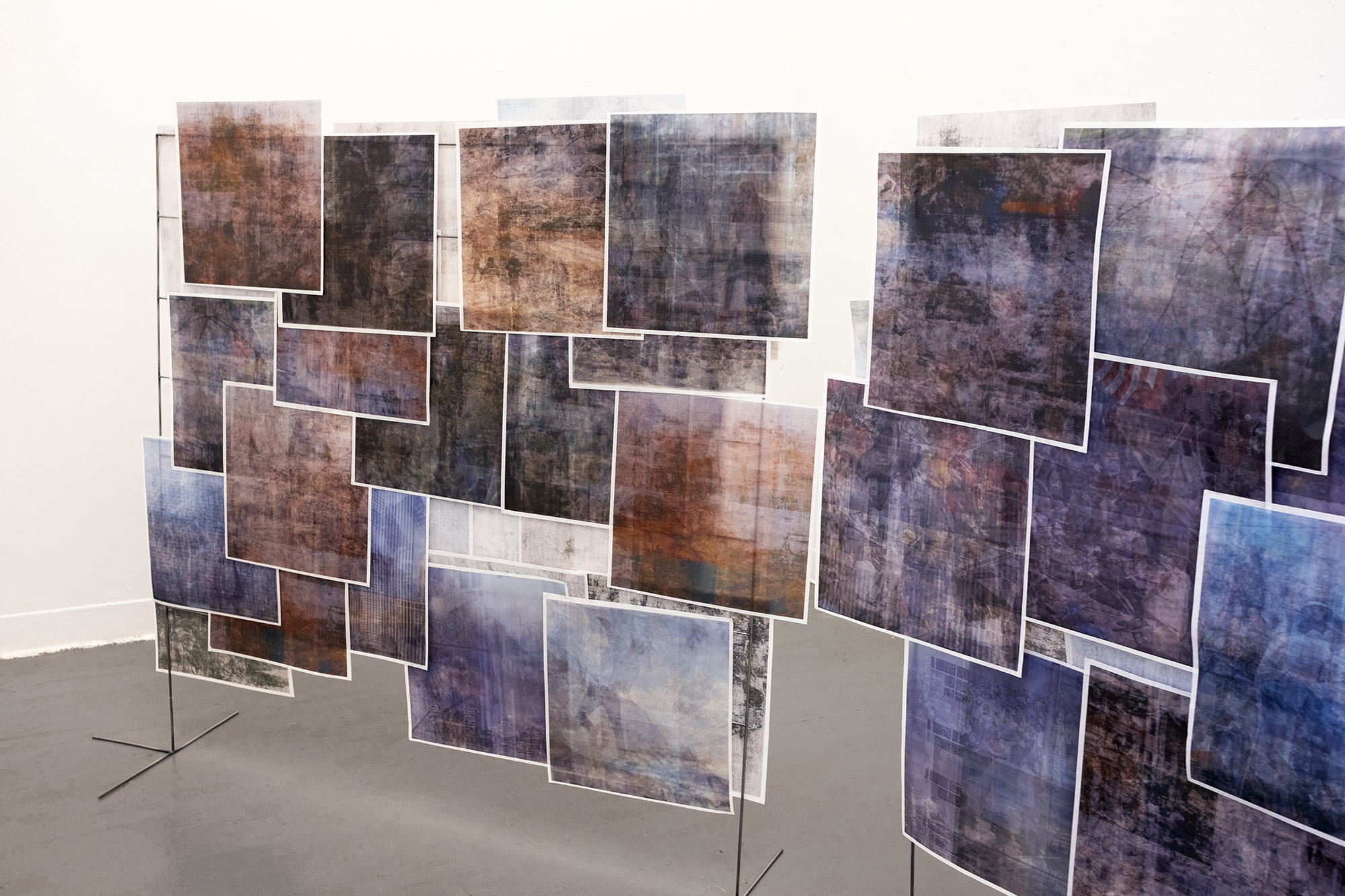
Searching For Still, 2021
Detail
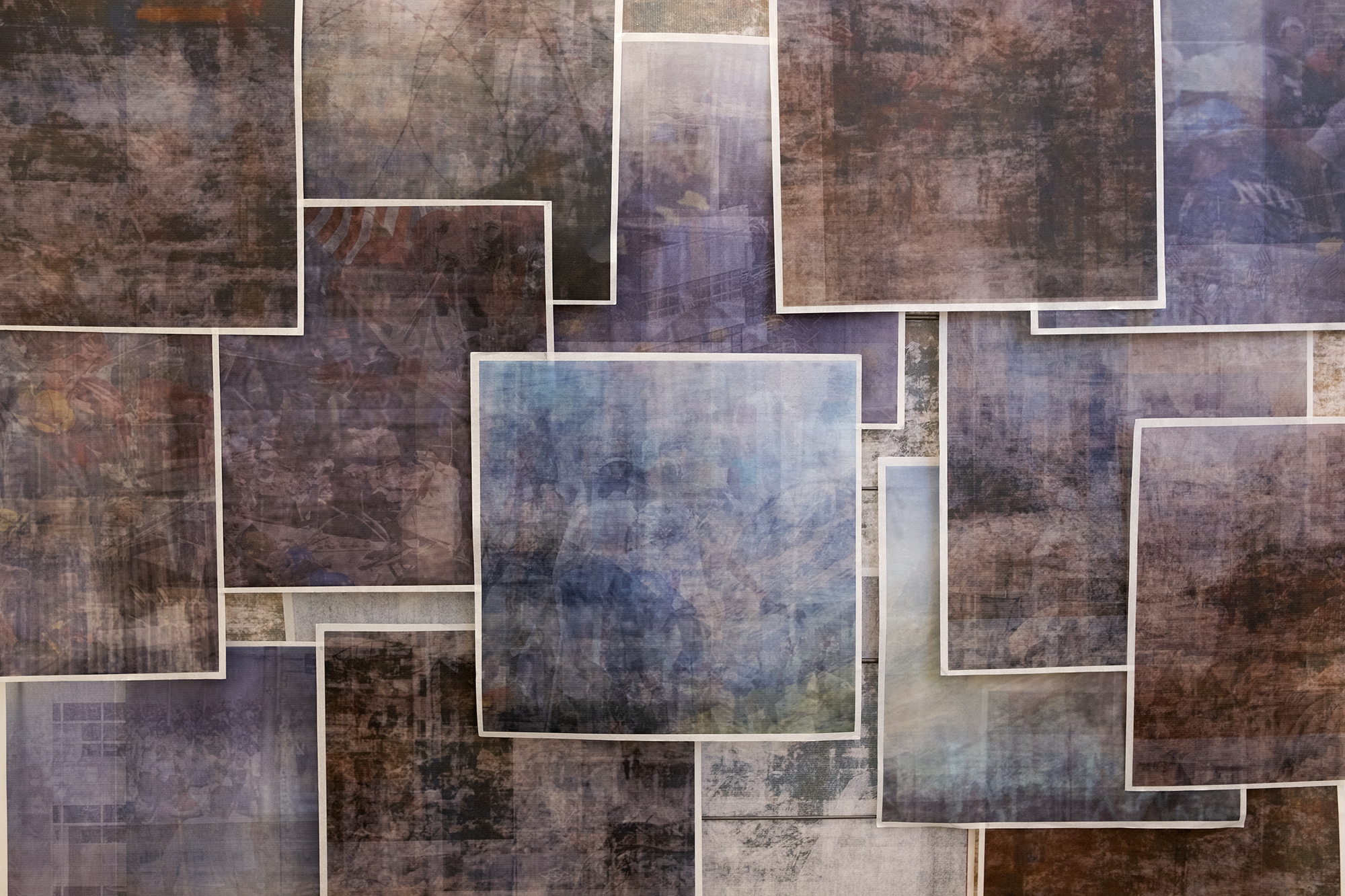
Searching For Detail, 2021
Detail

We Watch From The Margins, 2020
Dried red chillies, steel wire
1.5 x 2.5 x 8'
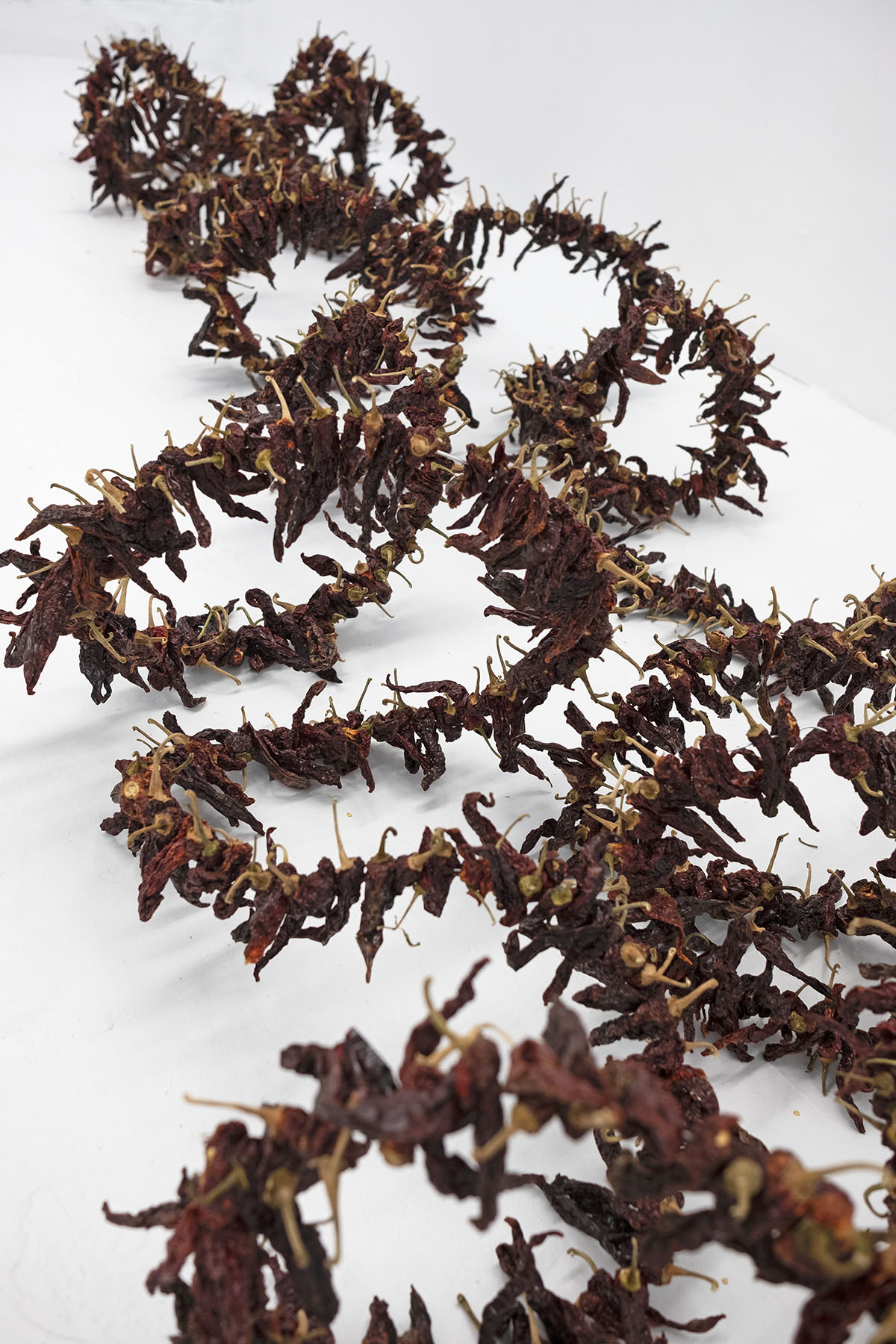
We Watch From The Margins, 2020
Detail

A Red Line Under a Blue Sky, 2021
Razor Blades
Approx. 8'
(Dimensions Variable)
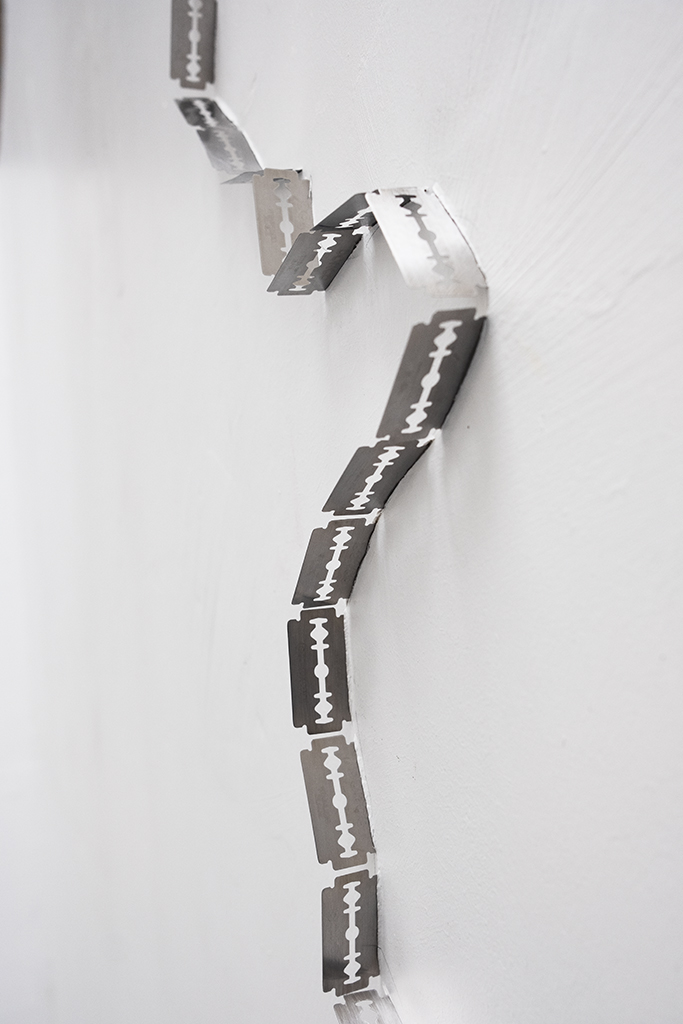
A Red Line Under a Blue Sky, 2021
Detail
Artist StatementAfter over a decade-long career as a photojournalist, Karen’s recent work is rooted in the investigation of the role of documentary photographs in truth-telling and their relevance as a reliable document of our time. This investigation into the function and responsibility of images also informs her sculptural practice. Her work challenges visual representations of state violence, power, suffering, and death while exploring its often illegible and obscure manifestations in our daily lives. Playing with semiotics, emblems, icons and motifs, Karen leads the viewer to question their role as a participant, bystander or witness in acts of violence and oppression. Using everyday materials and images, she explores sculpture and installation through the image/object’s potential for malleability, ephemerality and fragmentation.